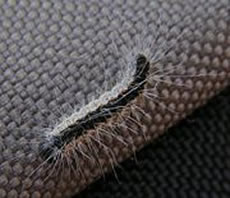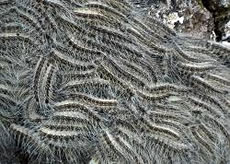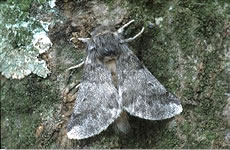Scary Hairy Killer Caterpillars Found in Park Royal
Ealing Council to find and remove Oak Processionary Moth caterpillars
Oak Processionary Moth caterpillars have been found in the Park Royal area. The caterpillars have poisonous hairs which break off and could be dangerous if inhaled by asthmatic or elderly people.
It is only at the caterpillar stage that these insects can pose a risk to the public. Direct or indirect contact with the caterpillars’ microscopic hairs (each caterpillar has around 68,000 of them) can provoke severe allergic reactions - skin rashes or even respiratory and eye problems in extreme circumstances.
Surveys are being undertaken to find the caterpillars and their nests. Work has already begun to remove ones which have been discovered.
Ealing Council is coordinating the combined response with its partner agencies.
Kew Gardens suffered an invasion of these last year. This was the first sighting in the UK of the moths - which were dealt with by blow torches. Deaths have been reported in Spain and ten years ago in Holland 20,000 people had to be treated after a major caterpillar invasion there. It is thought that the eggs were transported to this country in trees imported from Holland.
Health advice and information
How is the moth a health risk?
The Oak Processionary Moth (Thaumetopoea processionea) has caused outbreaks of dermatitis, conjunctivitis, itching, pharangitis and respiratory distress in Austria, Belgium and Holland in recent years.
The larvae of the caterpillar have hairs (setae) filled with a histamine liberating toxin (thaumetopoein), which in contact with the skin causes the above symptoms. The setae can spread by wind and affect people exposed up to 20 metres.
The illness associated with this moth is thought to be more serious than that associated with brown tail moth which has been prevalent in the UK for many years.
How does the moth cause symptoms?
The hairs of the caterpillar contain a toxin, which releases histamine in humans, causing symptoms similar to allergies.
What are the symptoms?
Most people present with skin itching and rashes, conjunctivitis and sore throats. Small numbers have symptoms of respiratory distress, similar to asthma.
Ealing Council Leader Jason Stacey said,“There is a chance that people could come into direct or indirect contact with the caterpillars’ microscopic hairs. We don’t want to alarm anyone, but we feel it is right to inform people so that they are aware of the situation and know what symptoms to look out for. All the relevant agencies are working in partnership to remove the caterpillars and make the area safe. If anyone is concerned that they may be suffering the symptoms associated with these caterpillars, they should contact NHS Direct or their GP.”
June 15, 2007
Related links
|


